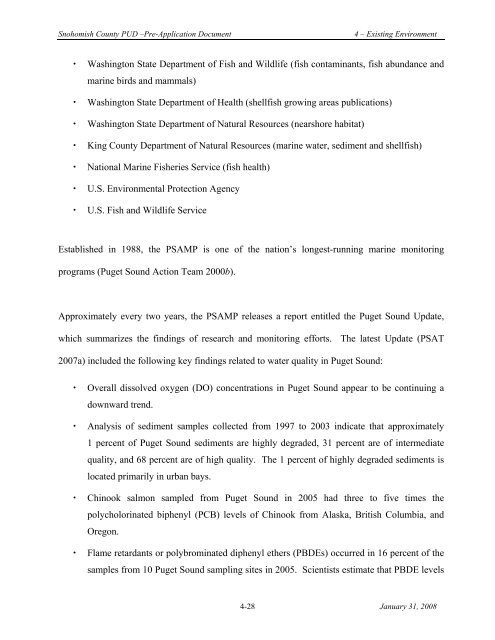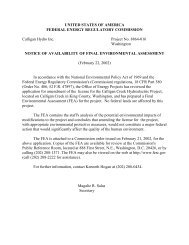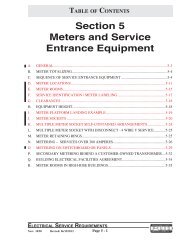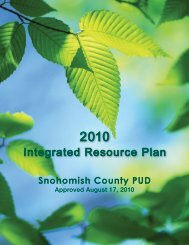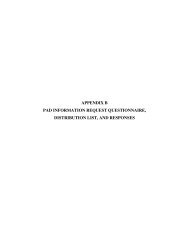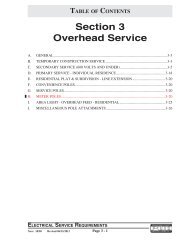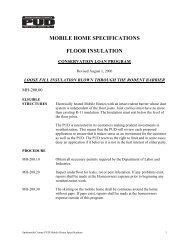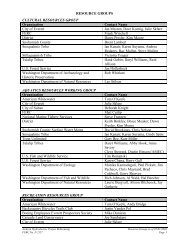Tidal_PAD_V1_Sec4.pdf - Snohomish County PUD
Tidal_PAD_V1_Sec4.pdf - Snohomish County PUD
Tidal_PAD_V1_Sec4.pdf - Snohomish County PUD
Create successful ePaper yourself
Turn your PDF publications into a flip-book with our unique Google optimized e-Paper software.
<strong>Snohomish</strong> <strong>County</strong> <strong>PUD</strong> –Pre-Application Document<br />
4 – Existing Environment<br />
• Washington State Department of Fish and Wildlife (fish contaminants, fish abundance and<br />
marine birds and mammals)<br />
• Washington State Department of Health (shellfish growing areas publications)<br />
• Washington State Department of Natural Resources (nearshore habitat)<br />
• King <strong>County</strong> Department of Natural Resources (marine water, sediment and shellfish)<br />
• National Marine Fisheries Service (fish health)<br />
• U.S. Environmental Protection Agency<br />
• U.S. Fish and Wildlife Service<br />
Established in 1988, the PSAMP is one of the nation’s longest-running marine monitoring<br />
programs (Puget Sound Action Team 2000b).<br />
Approximately every two years, the PSAMP releases a report entitled the Puget Sound Update,<br />
which summarizes the findings of research and monitoring efforts. The latest Update (PSAT<br />
2007a) included the following key findings related to water quality in Puget Sound:<br />
• Overall dissolved oxygen (DO) concentrations in Puget Sound appear to be continuing a<br />
downward trend.<br />
• Analysis of sediment samples collected from 1997 to 2003 indicate that approximately<br />
1 percent of Puget Sound sediments are highly degraded, 31 percent are of intermediate<br />
quality, and 68 percent are of high quality. The 1 percent of highly degraded sediments is<br />
located primarily in urban bays.<br />
• Chinook salmon sampled from Puget Sound in 2005 had three to five times the<br />
polycholorinated biphenyl (PCB) levels of Chinook from Alaska, British Columbia, and<br />
Oregon.<br />
• Flame retardants or polybrominated diphenyl ethers (PBDEs) occurred in 16 percent of the<br />
samples from 10 Puget Sound sampling sites in 2005. Scientists estimate that PBDE levels<br />
4-28 January 31, 2008


